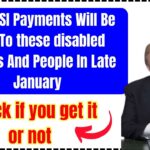If you’re struggling with mortgage payments, you’re definitely not alone. Across South Africa, thousands of families are feeling the pinch. With rising costs of electricity, food, petrol, and interest rates, more people are battling to keep up with their monthly bond repayments. But here’s the silver lining: there’s help. A new initiative now offers R1,400 in monthly mortgage relief to qualifying homeowners. This could be the break you need to stay afloat, protect your credit score, and keep your home.

In this in-depth guide, we’ll walk you through everything you need to know about this crucial relief program. We’ll break it down step-by-step: who qualifies, how to apply, what documents you’ll need, and how to improve your chances of approval. Whether you’re a seasoned homeowner, a first-time buyer, or even in arrears, this article provides the practical advice you need to make informed financial decisions.
Struggling With Mortgage Payments?
| Feature | Details |
|---|---|
| Monthly Relief | R1,400 per household (conditions apply) |
| Eligibility | South African citizens, income-tested, primary residence holders |
| Application Deadline | Ongoing (check National Housing Finance Corporation for updates) |
| Purpose | Help homeowners manage mortgage repayments during financial hardship |
| Government Support | Backed by the Department of Human Settlements and NHFC |
| Target Audience | Middle to low-income homeowners at risk of default |
Being a homeowner comes with big responsibilities, and when life throws you a curveball—like job loss or a health emergency—those responsibilities can feel overwhelming. But thanks to the R1,400 monthly mortgage relief, South Africans now have a real chance to stay in their homes and protect their long-term financial wellbeing.
What Is the R1,400 Monthly Mortgage Relief Program?
The R1,400 monthly mortgage relief program is part of South Africa’s effort to protect citizens from housing insecurity. Run by the National Housing Finance Corporation (NHFC) in partnership with the Department of Human Settlements, the initiative aims to prevent foreclosures by assisting households facing financial challenges.
This subsidy isn’t a loan and doesn’t need to be repaid. It’s a direct contribution toward your monthly home loan payment, making housing more affordable and sustainable. The goal? To help everyday South Africans remain homeowners, even during tough times like economic downturns or personal crises.
According to NHFC, this program is designed with flexibility in mind—making it accessible to workers who’ve recently lost jobs, those facing large unexpected expenses, or self-employed individuals with fluctuating income.
Why This Matters Now
The timing of this initiative couldn’t be more critical. In 2023, household debt in South Africa climbed to 75.1% of disposable income, as reported by Stats SA. That means over three-quarters of people’s earnings are going toward debts, leaving little for emergencies, savings, or even groceries.
Add to that the Repo Rate increases in recent years—pushing up interest on bonds—and you’ve got a perfect storm. Missing one or two mortgage payments can snowball into legal action, added fees, or worse—repossession.
Government-backed relief like this one is a vital safety net. Not only does it help individuals regain financial stability, but it also helps stabilize neighborhoods and prevent a housing crisis.
How to Qualify for the Mortgage Relief Program
To access the R1,400 monthly subsidy, you’ll need to meet the following basic eligibility requirements:
- Be a South African citizen or permanent resident
- Own and live in the property (it must be your primary residence)
- Have a gross household income typically below R25,000/month
- Be able to show proof of financial hardship
- Be up to date or in good standing with your lender, or have a repayment plan in place
Financial hardship can include:
- Job loss or retrenchment
- Reduced working hours
- Medical emergencies
- Divorce or loss of a breadwinner
- Significant increase in monthly expenses
Even if you don’t meet every point perfectly, it’s still worth applying. The NHFC reviews cases individually, with some flexibility depending on your situation.
How to Apply for Mortgage Relief
Here’s how to apply for the R1,400 monthly mortgage relief, broken down into five simple steps:
Step 1: Visit the NHFC Website
Begin your journey at the official NHFC website. This site contains the latest updates, downloadable forms, contact info, and FAQs.
Step 2: Gather Your Documents
You’ll need to prepare:
- A valid South African ID or passport with residency permit
- Your most recent mortgage bond statement
- Proof of income or income loss (e.g., payslips, UIF claim documents)
- Municipal rates account (for proof of residence)
- 3 months of bank statements
- An affidavit (if informal income or self-employed)
Tip: If you’re unsure about a specific document, call the NHFC hotline or visit a local housing support office.
Step 3: Complete the Application Form
Download the form or request a hard copy. Fill in every section with clear, accurate details. Make sure there are no errors, as this can delay processing.
Step 4: Submit Your Application
Submit online via the NHFC portal or drop it off at a participating bank, post office, or provincial housing department. Some branches also assist with form completion.
Step 5: Wait for Feedback
Review and approval may take 2 to 4 weeks. You’ll be notified via SMS or email. If approved, the subsidy is paid directly to your bank or mortgage provider monthly.
Real-Life Example: How It Works
Thabo, a 42-year-old father from Gauteng, worked in the hospitality industry for over a decade. After being retrenched during the COVID-19 pandemic, he was left with a R5,000 monthly mortgage and no income. With two children in school and bills piling up, he feared losing his family home.
After applying through the NHFC and submitting the right documentation, he was approved within three weeks. The R1,400 monthly relief brought his payment down to R3,600, allowing him to manage costs while he secured a new job.
“This relief gave me time to breathe,” Thabo explains. “It’s not just about the money—it’s about peace of mind.”
Other Support Options You Should Know About
1. Speak to Your Lender First
Most major banks—like Absa, Nedbank, FNB, and Standard Bank—offer options like repayment holidays, rate reductions, or term extensions. Early communication can open the door to tailored assistance.
2. Refinance or Restructure Your Bond
Refinancing may let you lock in a lower interest rate or consolidate debt. This can reduce your monthly obligations. Use an online mortgage calculator like Bankrate’s tool to play with different scenarios.
3. Consult a Certified Housing or Debt Counselor
A registered counselor can review your finances and advise on budgeting, debt consolidation, and relief programs. You can find accredited counselors through the National Credit Regulator (NCR).
4. Look Into Local or Provincial Grants
Several provinces offer housing-related assistance through municipal channels. Some focus on emergency relief, while others help with renovation, title deeds, or relocation.
Applying for South Africa’s R370 Grant? Check Eligibility & Common Mistakes to Avoid!
R1400 Monthly Payment in South Africa: Who will get this? Eligibility, Payment Dates
New South Wales Parents Can Receive a $100 Centrelink Cash Boost: Check Application Process
Frequently Asked Questions (FAQs) about Struggling With Mortgage Payments
Is the R1,400 mortgage relief considered income for tax purposes?
No, it’s a subsidy paid directly to your lender. You won’t be taxed on it.
Can I apply more than once?
If your financial situation worsens or your first application is denied due to incomplete documents, you can reapply.
What if I already have a payment arrangement with my bank?
That’s fine. This relief program complements, rather than replaces, existing agreements. In fact, having a plan in place could boost your chances of approval.
How long will the subsidy last?
The current program is open-ended but reviewed annually based on budget allocations. Always check the NHFC website for the latest updates.
Is there help for tenants or informal homeowners?
This particular program is only for bonded homeowners. However, there are separate rental support grants available through local municipalities.








